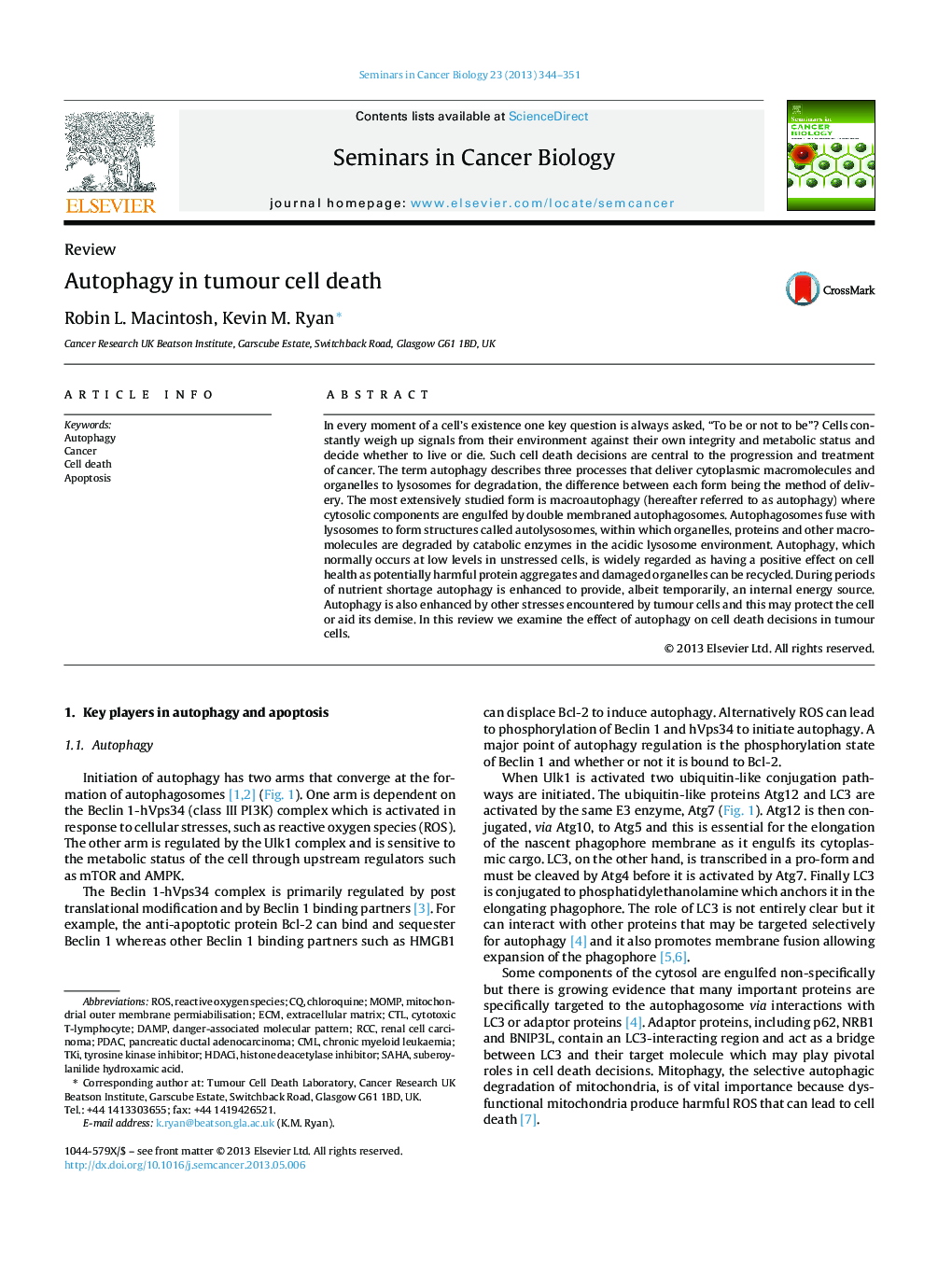| کد مقاله | کد نشریه | سال انتشار | مقاله انگلیسی | نسخه تمام متن |
|---|---|---|---|---|
| 2023729 | 1069799 | 2013 | 8 صفحه PDF | دانلود رایگان |

In every moment of a cell's existence one key question is always asked, “To be or not to be”? Cells constantly weigh up signals from their environment against their own integrity and metabolic status and decide whether to live or die. Such cell death decisions are central to the progression and treatment of cancer. The term autophagy describes three processes that deliver cytoplasmic macromolecules and organelles to lysosomes for degradation, the difference between each form being the method of delivery. The most extensively studied form is macroautophagy (hereafter referred to as autophagy) where cytosolic components are engulfed by double membraned autophagosomes. Autophagosomes fuse with lysosomes to form structures called autolysosomes, within which organelles, proteins and other macromolecules are degraded by catabolic enzymes in the acidic lysosome environment. Autophagy, which normally occurs at low levels in unstressed cells, is widely regarded as having a positive effect on cell health as potentially harmful protein aggregates and damaged organelles can be recycled. During periods of nutrient shortage autophagy is enhanced to provide, albeit temporarily, an internal energy source. Autophagy is also enhanced by other stresses encountered by tumour cells and this may protect the cell or aid its demise. In this review we examine the effect of autophagy on cell death decisions in tumour cells.
Journal: Seminars in Cancer Biology - Volume 23, Issue 5, October 2013, Pages 344–351